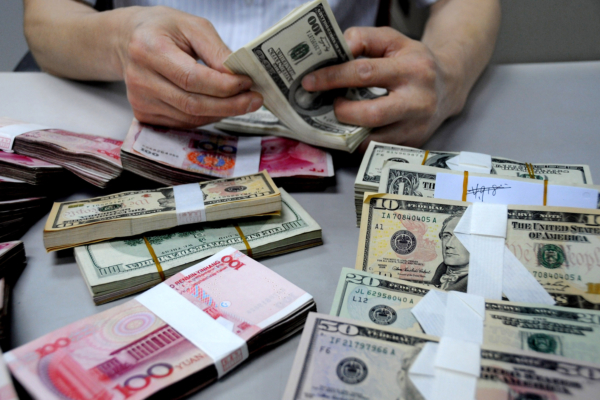Goldman Sachs analysts on Friday (August 30) refuted the exaggerated argument that the US dollar against the Chinese yuan could “avalanche”. They stated that Chinese enterprises are not yet ready to abandon holding US dollars and exchange them for Chinese yuan.
The debate stemmed from recent discussions about the rapid appreciation of the Chinese yuan. The offshore exchange rate of the Chinese yuan against the US dollar rose to a high point of 7.0895 on Friday, wiping out the decline since the beginning of the year.
Due to the influence of international market fluctuations, the Chinese yuan faces pressure for rapid and significant appreciation from exporters settling foreign exchange and hedging trades. It has been reported that major state-owned banks in China have been buying US dollars in the onshore foreign exchange market to slow down the appreciation of the Chinese yuan.
Stephen Jen, CEO of Eurizon SLJ Capital, recently put forward the idea of a “dollar avalanche” against the Chinese yuan.
In an interview with Bloomberg, he said that a rate cut in the United States could prompt Chinese enterprises to sell US dollar-denominated assets totaling $1 trillion and potentially further drive up the value of the Chinese yuan by up to 10%.
Referring to the impact of a large fund repatriation, he said, “Imagine an avalanche. The yuan will appreciate and could be allowed to appreciate—5% to 10% appreciation is moderate and acceptable for China”.
Jen mentioned that Chinese enterprises may have accumulated over $2 trillion in overseas investments since the Covid pandemic, and these assets carry higher interest rates compared to yuan-denominated assets. As the Federal Reserve begins cutting rates, the attractiveness of US dollar assets will weaken, potentially leading to a repatriation of $1 trillion to China as the interest rate differential between China and the US narrows.
He also stated that with continuing decline in US prices, coupled with the previous overvaluation of the dollar, the US facing twin deficits and the prospect of a soft landing, the dollar will depreciate, further pushing up the Chinese yuan against the US dollar.
However, other Wall Street experts estimate Chinese enterprise US dollar forex reserves much lower than Jen’s. The latest report from Goldman Sachs believes that the idea of a “dollar avalanche” against the Chinese yuan is exaggerated, as Chinese enterprises are not yet prepared to relinquish holding US dollars.
Goldman Sachs analyst Xinquan Chen stated in a report on Friday that their team’s estimate shows that Chinese exporters have accumulated approximately $400 billion since mid-2022, which is one-fifth of Jen’s estimate.
They believe that the recent appreciation of the Chinese yuan against the US dollar is mainly due to external factors, particularly market speculation on the speed of the Fed rate cuts and pricing changes related to the US elections suppressing bearish sentiments towards the Chinese yuan.
Goldman Sachs analysts asserted that the weak fundamentals of the Chinese market may dominate in the medium term, with the yuan expected to perform less favorably compared to major currencies.
Facing pressure of slowing growth and slowing consumer spending, Beijing is reluctant to implement significant stimulus measures. Traders are awaiting to see if the People’s Bank of China will respond to the strong yuan.
Goldman Sachs indicated that the potential returns on US assets remain highly attractive to yuan holders, which is a key factor for Chinese enterprises when deciding whether to repatriate funds.
“We continue to receive feedback from enterprises that they will only sell US dollars when arbitrage conditions change or they are confident that the US dollar is in a downtrend,” the report stated.
Interestingly, despite mainland Chinese media discussing Jen’s “dollar avalanche” news, reports from mainland financial research companies are largely in line with those from Goldman Sachs.
A research report from CICC stated that in the short term, the continued release of settlement demands cannot rule out the possibility of rapid appreciation of the exchange rate; however, in the medium to long term, changes in the overseas environment will remain the primary factor influencing the yuan exchange rate.
“This depends on one hand on the policies of the Fed and changes in the China-US interest rate differential, and on the other hand on the risk appetite in overseas markets,” the report said.

